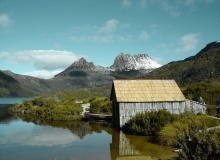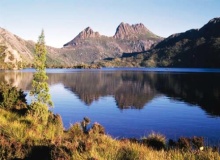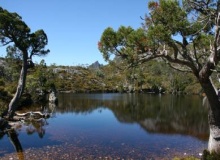Australia
Kakadu NT | Byron Bay NSW | Cradle Mountain TAS
A continent made for adventure with heritage-listed wilderness areas just waiting to be explored.
From the craggy peaks of the Blue Mountains to the lush tropics of Queensland and the coral treasure land of the Great Barrier Reef, Australia has something unusual and something special to offer travellers. A continent made for adventure, with world-renowned wine valleys, stunning beaches, heritage-listed wilderness areas just waiting to be explored, this is Australia. Travel to Australia and one can relax on beaches all year round, ski during winter, camp on a tropical island, discover the rugged Outback, take in the wineries and enjoy the world-class restaurants, galleries and museums in exciting cities.
Sydney may have joined the ranks of the world's top cities, but its architecture, stunning harbour and electric, manic personality keep it singular: You won't mistake it for anywhere else.
No matter where you travel in Australia, tour over three time zones, you can see sleek tour buses idling in parking lots along with mud-caked camper vans, petrol cans and lawn chairs strapped to their roofs. This sight is nowhere more prevalent than in the ‘red centre’ at Uluru. Once called Ayers Rock, Uluru is one of Australia’s biggest tour drawcards, where you will witness of the country’s greatest shows: sunset at “The Rock”. Watching the scalloped monolith go from reddish-brown to a haunting burnt-orange against the desert sky is still a magical—some say spiritual—experience.
Concierge Traveller advisors can offer specialist knowledge and advise for travel to and within Australia and can arrange Australia Tours and travel to anywhere within this country including any specialist tours, outback adventures or relaxing stays in some of Australia’s top resorts.
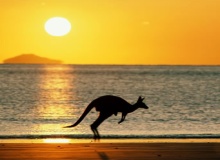
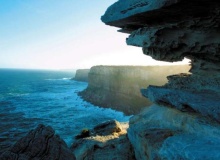
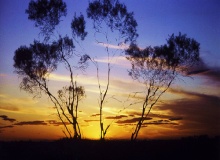
Kakadu National Park travel information
Kakadu National Park
In the Northern Territory, 200 kilometres east of Darwin, Kakadu National Park is one of the few places in the world that is listed twice as a UNESCO World Heritage site: once for its amazing ecosystem and a second time for Aboriginal rock paintings. With 486,000 hectares of wilderness, the reserve is an ecologically and biologically diverse area with many different landforms and habitats. These include the sandstone plateau and escarpment, areas of savanna woodlands and open forest, rivers, billabongs, floodplains, mangroves and mudflats.
There are over 60 species of mammals found in Kakadu National Park and a great many reptiles including goannas, frill-necked lizards, the frightening saltwater crocodile, water pythons and a number of highly venomous snakes. Kakadu also supports more than 280 species of birds, or about one-third of Australia's bird species.
More than 1,000 Aboriginal paintings adorn park cliffs. Aboriginal people have lived in Kakadu continuously for at least 50,000 years. There is a rich heritage of Aboriginal art (including cave paintings and rock carvings) and archaeological sites throughout the region. Many Aboriginal artefacts have been found at old camping sites, particularly in the escarpment and floodplain country, recording the skills and way of life of the region's original inhabitants.
Popular Kakadu tours include hiring a boat to tour the billabongs which fill up in the wet season and shrink during the dry, 4WD safaris and Kakadu art and wildlife small group tours.
WHEN TO TRAVEL to Kakadu
It's best to visit Kakadu National Park from early March to mid-October; many roads are impassable during the wet season, around Christmas. No matter when you go, it is essential take along insect repellent, a hat and plenty of sunscreen.
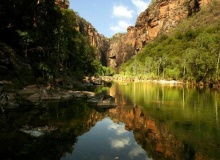
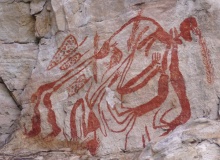
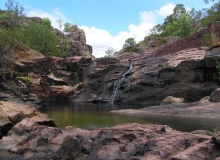
Byron Bay
Byron Bay is the eastern most point of Australia's mainland on the New South Wales ' north coast. It is famous for its alternative lifestyles and attracts people from all walks of life. With its numerous beaches, unspoiled hinterland, relaxed lifestyle, outstanding cafes and restaurants Byron Bay is a popular travel destination. Byron Bay has also long since attracted artists and writers many of who have moved here and are inspired by its natural beauty and relaxed atmosphere.
Cape Byron lighthouse was built in 1901 and for a century alerted passing ships to the dangers of the coast. Standing sentinel atop a 94 metre cliff, the lighthouse is a must-see for all visitors to Byron Bay. Travellers will see not only stunning views, but most likely dolphins and turtles, whales in season, and maybe the pretty wallabies that now inhabit the Cape.
From May to October, Cape Byron is one of the best on-land vantage points for watching the annual migration of the humpback whale. The whales head north from May-July to have their calves in the warm tropical waters of the Coral Sea, then come home to the Antarctic with their young from August to October.
The Cape Byron Marine Park extends all around Cape Byron, from Brunswick Heads in the north to Lennox Head in the south. From the walking tracks over the Cape, you'll see many of the species that make it special, including bottlenose dolphins, rays, green turtles and, in season, humpback whales. The snorkelling and diving at Julian Rocks are excellent, and you'll be astonished by the variety of marine life.
WHEN TO TRAVEL to Byron Bay
Anytime is great for Byron Bay travel. With its temperate climate even winters are pleasant. The busiest time is during Dec/Jan. Best to avoid travelling during end of Schools week or ‘schoolies’ which is normally during the month of November, where hoards of teenage school leavers flock to destinations like Byron Bay for a week of partying. Check for dates as these vary every year.
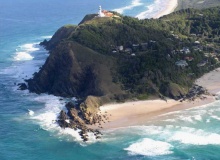
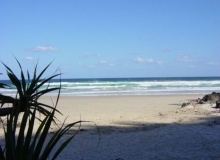
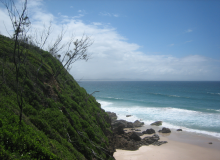
Cradle Mountain Tasmania
Cradle Mountain forms the northern end of the wild Cradle Mt - Lake St Clair National Park, itself a part of the Tasmanian Wilderness World Heritage Area. The jagged contours of Cradle Mountain epitomise the feel of a wild landscape, while ancient rainforest and alpine heathlands, buttongrass and stands of colourful deciduous beech provide a range of environments to explore. Icy streams cascading out of rugged mountains, stands of ancient pines mirrored in the still waters of glacial lakes and a wealth of wildlife ensure there is always something to captivate a visitor’s attention.
Cradle Mountain is one of the most popular natural areas in Tasmania.
Cradle is the starting point for the world-famous Overland Track, a magnificent 6 day walk that will take you through the heart of some of the finest mountain terrain. It is one of Australia's premier wilderness walks.
For many, a highlight of their trip to the northern end of the Cradle Mountain - Lake St Clair National Park is the view across Dove Lake to Cradle Mountain, one of Tasmania's natural highlights. The mountain itself is a jagged, dolerite peak that dominates the area. Its name, supposedly, is derived from the mountain's resemblance to a miner's cradle. This dramatic vista can be seen either on foot as you walk along the shores of the Lake, or from the carpark at Dove Lake. Visitors should bear in mind, however, that the wild weather of the Tasmanian highlands often shrouds the mountain in cloud.
WHEN TO TRAVEL to Cradle Mountain Tasmania
The weather in this part of Tasmania can be unpredictable at any time of year. Best time to travel is December to March when the days are longer and there is more chance of clear skies and warmer weather. However be aware that weather conditions can change very rapidly around the Cradle Mountain area.
